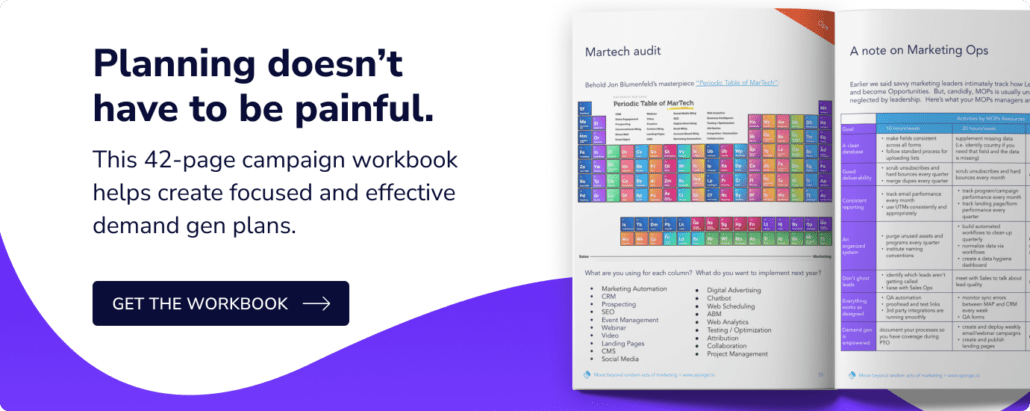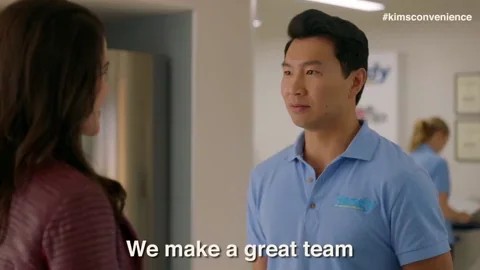During the pandemic a lot of our clients experimented with virtual events. We’ve just wrapped up annual reporting, and whelp, we officially think virtual events are a poor use of your demand gen budget. ¯\_(ツ)_/¯
>> Related: How to Plan a Webinar <<
The hard truth about 3rd party virtual events
Third party events that attempt to mimic conferences or trade shows have been tough. Even when we had a speaking slot. Who knows if attendees muted us, or left after two minutes, but the leads just didn’t convert, and we didn’t see any ROI.
One bright spot: there is a format that works, it’s just rare. At one event, instead of presenting a PPT deck, we hosted a conversation amongst other attendees. Our sponsorship garnered 3 conversations with 10 attendees each. We mostly listened, asked questions, and talked to actual people. We learned things and turned it into content.
Another major pro for this format is you don’t need to deeply prepare or beg a technical SME for support. We “sent” sales reps — they’re great at asking thoughtful discovery questions — and they left the event with 30 personal connections.
TL;DR — if there’s limited engagement between the speaker and audience, it’s just not worth it. Hunt for the rare events that replicate 1:1 or 1:few conversations with your key persona. It’s the only format we want to pursue.
The semantics of virtual event vs. webinar
We see a lot of people promoting “virtual events” but honestly just delivering a webinar or Zoom meeting. With a $15k sponsorship price tag!? 🤔
Here’s how we’re defining virtual events:
- There are multiple, synchronous tracks of content or there are multiple days of content
- Attendees interact, network, and connect
- It’s live
If the content is pre-recorded, it’s a webinar. Is the audience is silent, it’s a webinar. And there’s no way we’re paying major sponsorship dollars for that.
Don’t make your registrants the guinea pig
If you’re looking to host your own virtual event, and perhaps transform a former in-person conference to a digital one… there’s a lot that can go wrong. This is a new event model with new software vendors. It’s basically untested.
Before committing to writing content, drumming up registrants, and flawlessly delivering as promised, practice the entire concept on yourself first. Sales Kickoff is great way to run a rehearsal and figure out:
- How do we replicate banter during coffee breaks?
- Will anyone sit through 3 days of virtual content at their desk?
- Do people get distracted or multitask? Do they actually learn?
- How can people feel “hosted”? Do we deliver snacks?
- How do we replicate a dramatic brand experience? Will they feel like they’re part of a community?
- What are people willing to pay? Can we distinguish ourselves from hundreds of companies doing the same thing?
- How do we have fun? This year is a grind, and everyone is craving levity or entertainment.
Our bet is that replicating the 7 hours-a-day-for-3-days format does not work. Registration will be a slog. Attendees will drop off at exponential rates. And companies will come out the other side wondering why they even bothered.
Understanding the specific goals for this investment is key. Because I bet if you poured the same resources into demand gen campaigns, you’d see better ROI. And if you invested the same amount in Customer Success teams, you’d see better engagement and retention. Buyer beware folks.
Get referrals for new tech
There are a lot of emerging tools trying to replicate the in-person experience. In particular, we’ve heard great things about Cadence. It’s affordable, customizable, and integrates with Zoom (or the webinar tool of your choice). Essentially it “wraps” your meeting tool so you can run multiple tracks, and the virtual event feels more grand.
If you’ve used a compelling tool, or found a dynamic format, we want to hear from you. This is evolving fast.
Brush off the stale webinar series
Btw, don’t let the “virtual event” buzz lead you to forget webinars as a demand gen channel. We’re big fans of webinar series that get progressively deeper:
- You can go wild promoting the theme, but then methodically deliver one topic at a time.
- Attendees know what to expect.
- You probably already have the tried-and-true software.
- On-demand webinars are durable content assets.
- And your team (or attendee base) may just not have the bandwidth for a 3-day smorgasbord.





